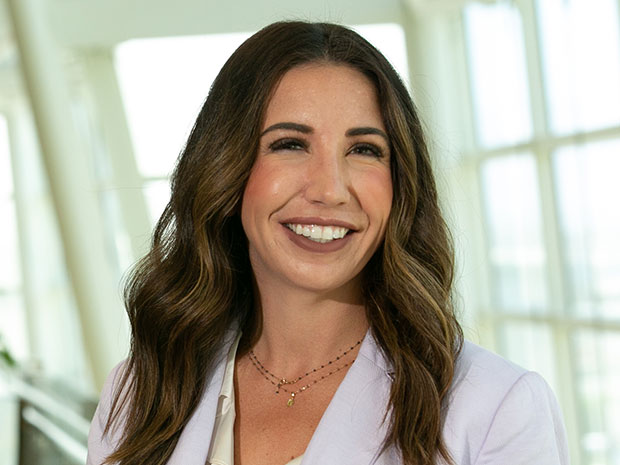Treasury issues guidance on 45Q LCA rules for carbon oxide capture and utilization credit
Overview
Section 45Q offers a federal tax credit for the sequestration or utilization of carbon oxide, which includes both carbon dioxide (CO2) and other qualified carbon oxides. The Inflation Reduction Act of 2022 significantly enhanced this credit, increasing its value and broadening eligibility criteria. The amount that a taxpayer may claim as a Section 45Q tax credit is computed per metric ton of qualified carbon oxide captured and sequestered or utilized. Qualified carbon oxide is a carbon oxide that would have been released into the atmosphere if not for the qualifying equipment.
The section 45Q credit may be claimed annually for twelve years after the carbon capture equipment is placed in service. The amount of the credit as well as various features of the credit depend on when the qualifying capture equipment is placed in service. In general, assuming the prevailing wage and labor requirements are met, for equipment placed in service after Dec. 31, 2022, the credit is $85 per metric ton of qualified carbon oxide captured and sequestered and $60 per metric ton for qualified carbon oxide that meets the utilization rules.
Utilization
Uses of carbon oxide that may qualify for the section 45Q credit are:
- Use through the process of photosynthesis or chemosynthesis (such as the growing of algae or bacteria)
- Chemical conversion to a material or chemical compound in which the carbon oxide is securely stored (such as in the production of cement)
- Use of the carbon oxide for any other purpose for which a commercial market exists (other than as a tertiary injectant in an enhanced oil or natural gas recovery project).
To determine the amount of carbon oxide utilized, the taxpayer must demonstrate, based on an LCA of greenhouse gas emissions, the metric tons of carbon oxide that were captured and permanently isolated from the atmosphere, or displaced from being emitted into the atmosphere. To show that there is a net reduction of carbon oxide, a taxpayer must conduct a Life Cycle Analysis (LCA), which verifies quantities of carbon oxide used. This notice is to shed some light as to how to submit an LCA for review, and what standards should be used.
Notice 2024-60
Notice 2024-60 provides guidance on several procedural issues related to utilization that were not provided in the final regulations, including:
- Lifecycle Analysis report requirements
- Submission procedures
- Review and approval process
Lifecycle Analysis report standards and requirements
The IRS requires taxpayers to document the results of their LCA in a written report for each qualified facility where they wish to claim the Section 45Q tax credit for carbon oxide utilization. Each LCA Report must adhere to the standards set by the International Organization for Standardization (ISO) 14040:2006 and ISO 14044:2006, ensuring the report conforms with principles, framework, requirements, and guidelines for life cycle assessment. The Notice specifies that the LCA must comply with the most recently revised version of the Department of Energy’s (DOE) National Energy Technology Laboratory’s Carbon Dioxide Utilization Life Cycle Analysis Guidance for the U.S. DOE Office of Fossil Energy and Carbon Management and 45Q Addendum to the CO2U LCA. The LCA should include both direct (primary) and indirect (secondary) data, with a focus on primary data to represent the actual operational performance of the taxpayer's system for the relevant tax year.
An independent third party must perform or verify the LCA Report. This review must include an assessment of the LCA model and supporting data, complying with ISO 14071:2014 standards for critical review processes and reviewer competencies. The independent third party must provide a statement of their qualifications, including a professional license, and an affidavit confirming their independence from the taxpayer and, if applicable, from both the electing taxpayer and the credit claimant.
Submission procedures
To comply with the procedural requirements under section 45Q, a taxpayer must submit an LCA Approval Request to both the IRS and the Department of Energy (DOE) for technical review. This request includes the LCA Report, supplemental information supporting the report's data, an Independent Third-Party Statement, and, if applicable, the LCA model used. The supplemental information should provide detailed data supporting the LCA Report, such as production schedules, maintenance details, throughput, changes in input energy and materials, and any deviations from the described process technology. Additionally, taxpayers must disclose to the IRS if any previously filed claims for the section 45Q utilization credit were adjusted and the reasons for those adjustments.
Review and approval process
The IRS first reviews the request for completeness and adequacy of the materials given. Once the IRS determines the review is complete, it is then sent to the DOE for another review. If the LCA Approval Request is incomplete, the IRS will notify the taxpayer via fax, e-fax or phone, giving them 45 days to provide the missing information. Failure to respond within this period may result in a denial of the request, though extensions can be granted in cases of force majeure if requested in writing.
The DOE then conducts a Technical Review, which can either be a Conformance Review, or a Critical Review. The Conformance Review focuses on the applicable standards and best practices. Should the Conformance Review reach the conclusion that further investigation is warranted, the DOE then performs a Critical Review, which has a broader scope than the Conformance Review. The Technical Review includes a detailed assessment of the LCA model and supporting data. The DoE may also request additional supplemental information which must be provided within 45 days, or the request may be denied. The DOE will notify the IRS of its findings, but it will not provide status updates directly to taxpayers.
The IRS will then decide whether to approve the LCA based on its review and the DOE’s input. This approval is necessary before claiming the section 45Q utilization credit. The IRS’s review does not prevent future examinations of the taxpayer's return or records.
If an LCA is denied but the issues can be resolved, the taxpayer may revise and resubmit the request, clearly indicating that it is a resubmission after denial. If an LCA is denied based on the IRS review alone, the taxpayer may request an IRS administrative review of the denial.
An Approved LCA is covered for the calendar year it is submitted and the following two calendar years. After three years, a taxpayer may seek re-approval of an LCA with a new LCA Approval Request to the IRS. Additionally, a taxpayer must resubmit an LCA Approval Request if there is a Material Change to the report. A Material Change is defined as a change in the “Life Cycle Displacement Factor.” Once this material change does occur, the Approval Request must be resubmitted to both the IRS and DoE. There are further requirements for calculating whether a Material Change has occurred. A taxpayer also has a continuing obligation in annually calculating their Life Cycle Displacement Factor.
Washington National Tax takeaways
The issuance of Notice 2024-60 provides long-awaited guidance on the process and procedure for taxpayers intending to claim section 45Q credits for utilization. While the IRS and DOE have been reviewing LCAs for section 45Q, the issuance of published guidance provides clarity on the process and procedures. It remains to be seen how broadly the government will interpret the utilization in a commercial market and what the DOE will accept to establish utilization. That being said, facilities capturing CO2 for sale in the beverage, chemical, or dry ice industry, such as ethanol plants, may consider LCA applications for this credit.
The guidance left open the possibility for future proposed regulations to amend the 45Q regulations related to utilization and the LCA process. For more detailed information taxpayers should consult with their tax advisor.





